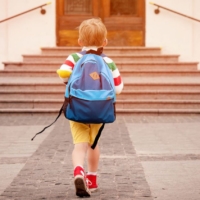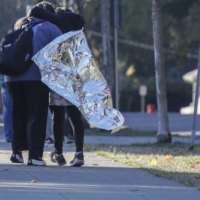A New Approach to Preventing Weapons-Related Violence at California Schools Study gauges the prevalence of weapons on campuses and provides a comprehensive look at factors that put schools at risk
By Mary Braswell
At some schools in California, nearly 1 in 5 students say they have either carried a weapon or been injured or threatened with one, according to a new study co-authored by UCLA Social Welfare Professor Ron Avi Astor that examines the presence of weapons in the state’s public middle and high schools and recommends focusing on campus-level conditions that could serve as warning signs for violence.
“Although tragic incidents of shootings in schools are rare and directly affect only a small number of students, tens of thousands of students report bringing weapons to school, and many more see other students in their school carrying weapons,” said Astor, who holds joint appointments at the UCLA Luskin School of Public Affairs and UCLA School of Education and Information Studies.
The study, co-authored with Rami Benbenishty of Hebrew University of Jerusalem, was published recently in the Journal of School Violence.
Based on surveys of nearly 890,000 California students in grades 7, 9 and 11, the research focuses on all types of weapons — not only guns — and assesses how factors such as the level of crime in a school’s surrounding neighborhood, students’ feelings of belongingness or victimization at school, their relationships with teachers and staff, and their perceptions about whether disciplinary practices are fair can heighten or lower the potential for weapons-carrying and violence.
This holistic or school-wide approach represents a significant departure from previous school-violence studies, which have typically sought to identify risk factors around individual students who might pose a threat, Astor noted.
“A major limitation of current ‘shooter’ studies is that they tend to maintain a narrow focus on individual perpetrators,” the authors write. “Although it is very difficult to detect students who perpetrate school shootings, it is possible to identify schools that have many students who are involved with weapons.”
The number of students who reported seeing weapons on campus is very low at many schools, according to the study, which included a representative sample of students from every county in the state who completed the California Healthy Kids Survey between 2013 and 2015.
However, in 3.3% of schools, more than 15% of students reported carrying a weapon, and in 5.8% of schools, at least 15% of students said they had been injured by a weapon or threatened with one. It is at these schools in particular, Astor and Benbenishty say, that an approach focused on improving campuswide conditions can bear the most fruit.
“It is imperative to develop a monitoring system to identify such schools and channel resources to this vulnerable group of students, educators and parents,” said Astor, who teaches a UCLA undergraduate course on ways to improve school safety. “We must create opportunities to hear their voices and explore local solutions that make their schools safer.”
Fostering a warm, supportive school environment is key to reducing the presence of weapons and creating a truly safe campus, according to the authors, whose previous research has demonstrated that prioritizing a culture of care, funneling more resources to vulnerable schools and elevating the voices of students, teachers and students leads to a drop in the number of weapons at schools.
“Students who trust that teachers support them and have a sense of safety in school may be less inclined to bring weapons to school,” the authors write.
In this new study, Astor and Benbenishty also focus on the unintended negative consequences of past efforts to deter individual shooters by “hardening” schools with metal detectors, security cameras and armed staff, as well as “active shooter” drills and harsh mandatory punishments that research shows often demonstrated bias against students of color.
These measures, they noted, frequently created fortress-like campuses that greatly diminished students’ well-being, heightened the fear of violence on school grounds and sent more of the nation’s children into the school-to-prison pipeline.
“Schools,” the authors conclude, “could develop a variety of caring and supportive approaches to reduce weapons-related behaviors … that do not include law enforcement methods and do not increase the school-to-prison pipeline.”










Leave a Reply
Want to join the discussion?Feel free to contribute!